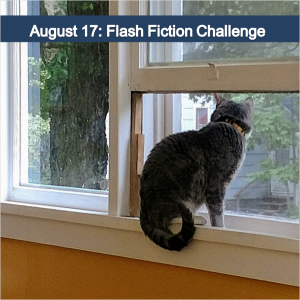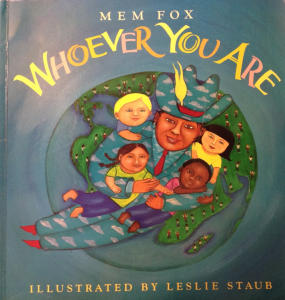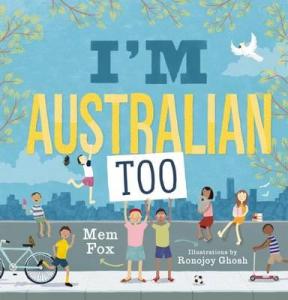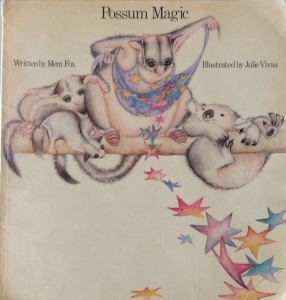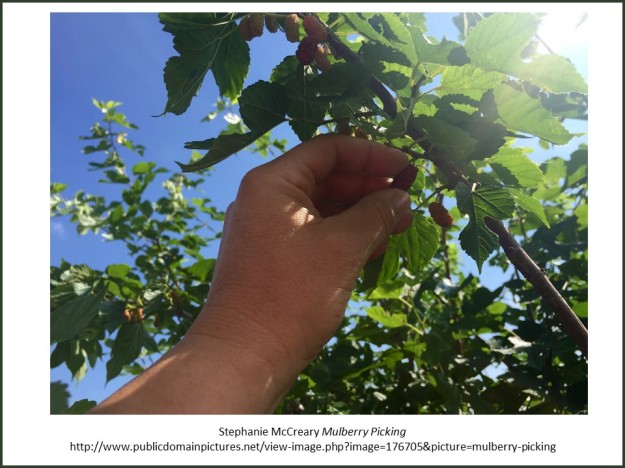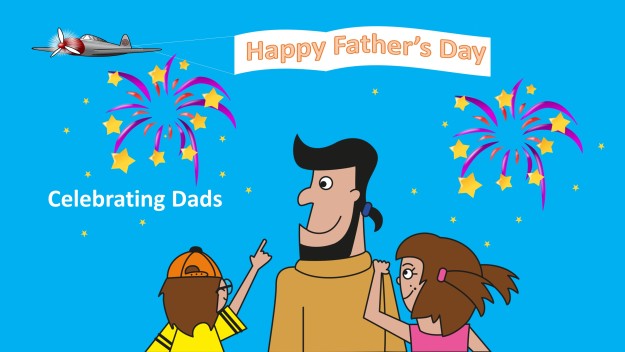We sometimes think of reading as a form of escapism. But many stories, including those in picture books, feature an escape as part of the complication or resolution.
It doesn’t require much thought to create a list. Here are just a few to start:
#6 Traditional stories

By Charles Perrault, Harry Clarke (ill.) [Public domain], via Wikimedia Commons
Hansel and Gretel – the children escape from the witch
Snow White – escapes death ordered by the jealous queen
The Three Pigs – escape from the Big Bad Wolf
The Lion and the Mouse – the mouse helps the lion escape the hunter’s trap
The Gingerbread Man – escapes from the oven and those who pursue him
I had a little more difficulty in finding modern tales involving an escape, but here are a few:
#6 Modern tales
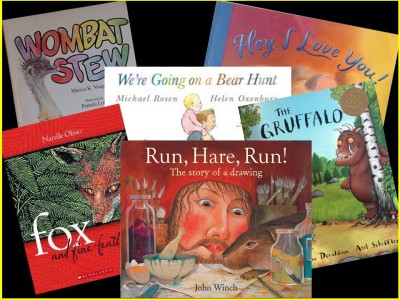
Hey, I Love You! by Ian Whybrow – father and son mouse escape the claws of the cat
The Gruffalo by Julia Donaldson – the mouse uses his wiles to escape being eaten
Wombat Stew by Marcia Vaughan – Wombat’s friends help him escape being Dingo’s dinner
Fox and Fine Feathers by Narelle Oliver – with the help of the nightjar the birds escape being a feast for fox
Run, Hare, Run! The story of a drawing by John Winch – the rabbit has numerous attempts at escaping the hunter but is caught, and finally freed
We’re Going on a Bear Hunt by Michael Rosen – the family escapes from the bear encountered in a cave
A new favourite
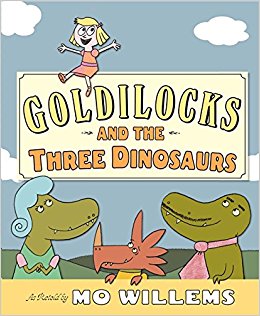
This Mo Willems story is an innovation on the traditional tale of Goldilocks escaping from the three bears. In Goldilocks and the Three Dinosaurs, Goldilocks has a lucky escape out the back door just as the dinosaurs return home through the front door. Willems concludes his story with two morals, one for the dinosaurs:
Lock the back door!
And one for Goldilocks:
If you ever find yourself in the wrong story: leave.
What a great philosophy that we could perhaps employ more often. If we don’t like where we’re at, just leave. Life’s decisions are not always that easy though.
I rather like the idea of characters appearing in the wrong story. What a great topic for discussion with children and a wonderful stimulus for their writing.
- What if the Big Bad Wolf knocked on the Giant’s door?
- What if the Three Pigs chased the Gingerbread Man?
- What if Goldilocks came to the house of Red Riding Hood’s grandma?
- What if?

In fact, Nick Bland has written a story that utilises this concept. In The Wrong Book, Nicholas Ickle tries to tell his story but keeps getting interrupted by other characters such as an elephant, monsters, a queen and a pirate. Nicholas tells them that they are in the wrong book and to go away. By the time they leave, we get to the end of the book and there is no time for him to tell his story.
But what if the story characters didn’t want to be in the book at all, and decide to escape? How would they escape? What would the writers do if their characters revolted and walked off the job?
I’m thinking about escapes this week as Charli Mills has challenged the Carrot Ranch Literary Community, to In 99 words (no more, no less) write about an escape artist. It can even be you, the writer, escaping into a different realm or space in imagination. It can be any genre, including BOTS (based on a true story) or fantasy. You can focus on the escape, the twist or the person who is the escape artist.
Where could I escape to if not picture books? Here’s my contribution. I hope you like it.
Let’s get out of here
Delaying the inevitable, she was picking wildflowers when she heard sobbing. She gasped to see him cowering behind the bushes but ignored instructions to avoid strangers.
“What’s wrong?”
“I can’t do it anymore. Every day: first the pigs; then your grandma. They’ve painted me bad. I’m not. I’m –“
A giant with a goose crash-landed beside them.
“I’ll not let that nasty boy steal my goose, again. And he says I’m bad.”
A diverse troupe in T-shirts emblazoned “Freedom for princesses” appeared.
“We want out,” they all chanted.
A witch magicked a rocket from a pinecone and everyone disappeared.
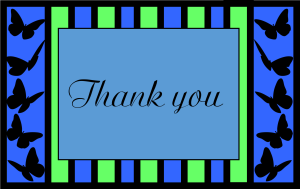
Thank you for reading. I appreciate your feedback. Please share your thoughts.


